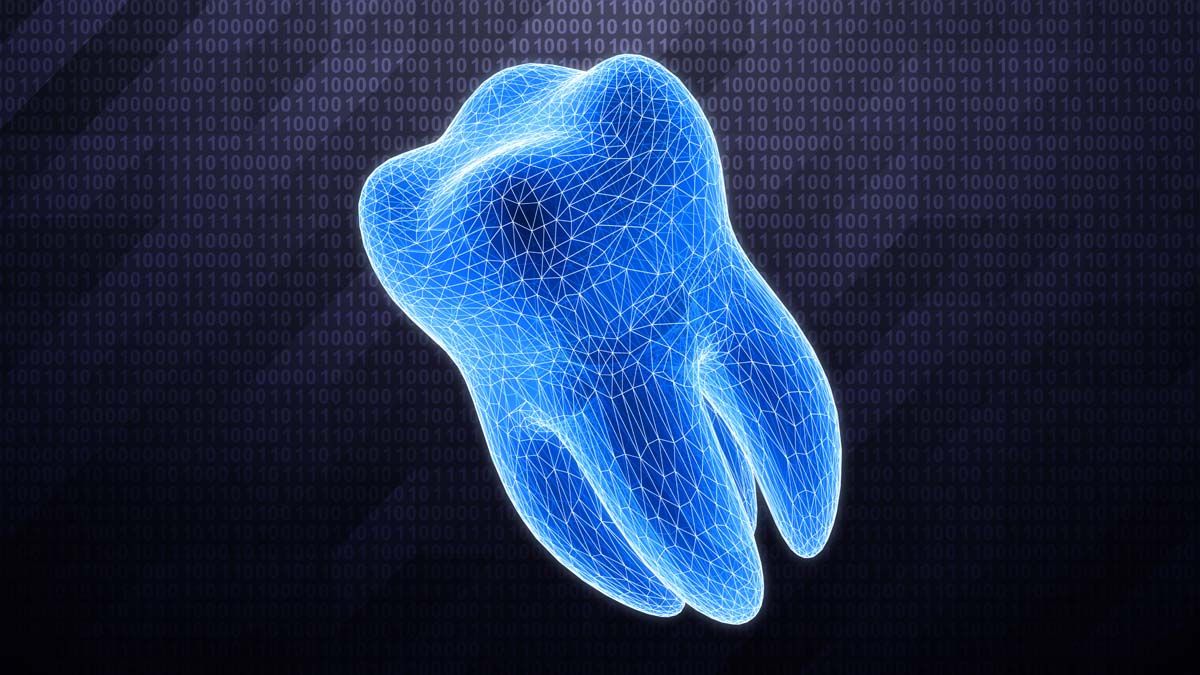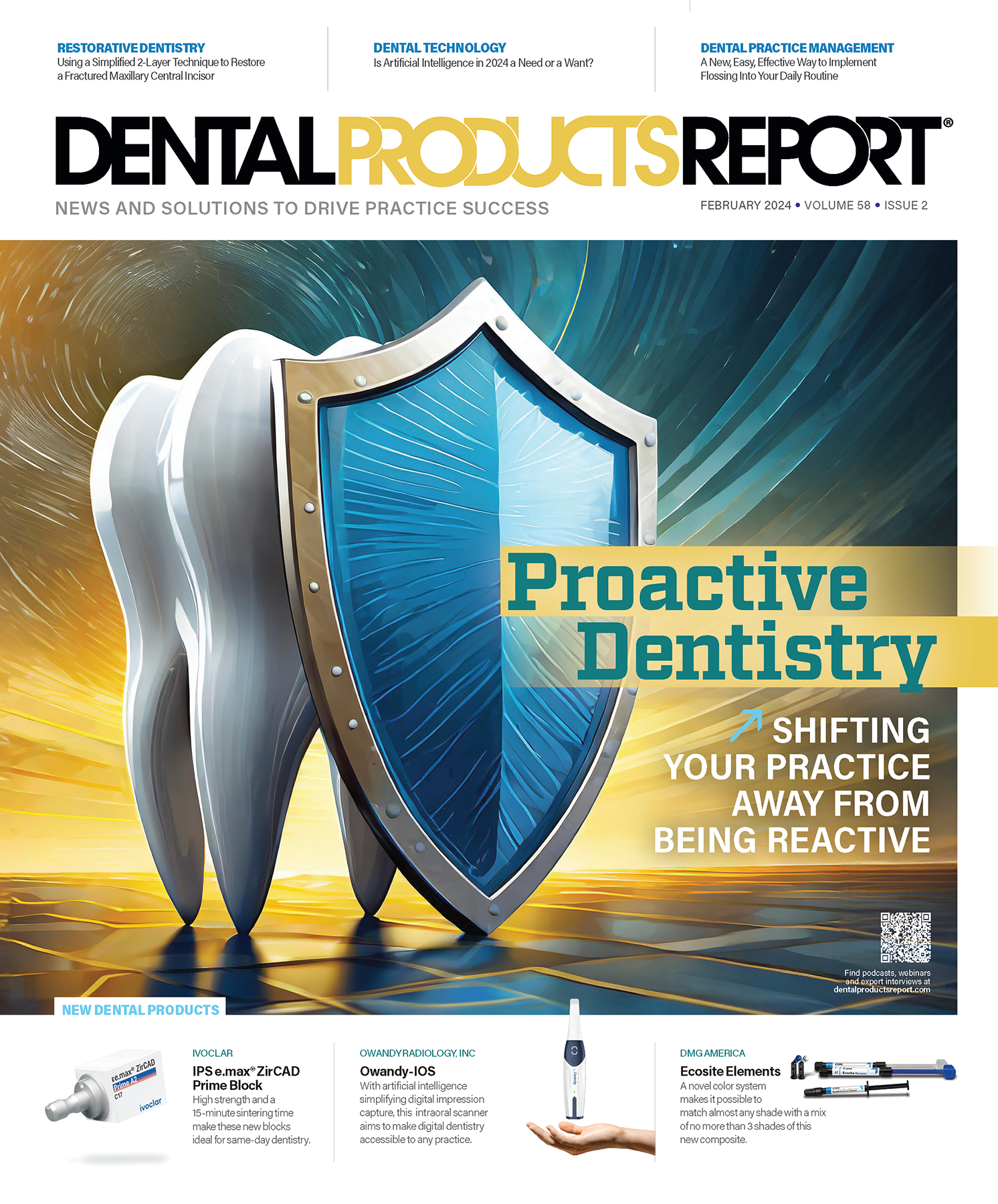Is Artificial Intelligence in 2024 a Need or a Want?
Chief Dental Editor and Technology Editor John Flucke, DDS, reflects on artificial intelligence’s impact and how vital it might become in 2024.
Is Artificial Intelligence in 2024 a Need or a Want? Image credit: © Pavel Ignatov – stock.adobe.com

For those of you not keeping score at home, I want to brag a little. In January 2023, I wrote an article on artificial intelligence (AI). The dental AI company Pearl had just received FDA clearance for several things, and I was excited for the future of AI in dentistry. Over the years, I’ve been asked to make a lot of predictions about the future. Some have been accurate, but many (most) have been a total swing and a miss. However, in January 2023, I predicted that 2023 would be “the year of AI in dentistry” and smacked that one out of the park (feel free to imagine me patting myself on the back here).
I knew that AI was growing in scope and being used in the background of many varied systems inside and outside dentistry, and I expected at some point in the not too distant future that we’d be seeing a lot more from the field. However, I’ll be the first to admit I never thought that within a month, AI would explode into being the technology sensation of the entire year.
The Rumble That Started the Tsunami
As you probably know, an earthquake at sea is what starts a tsunami. Boats that are over the spot will hardly notice the energy released, but the shock waves travel outward, and when they get to the shallow waters of a coastline, that energy is converted into a massive wall of water.
Not to make light of such disasters or those affected by them, but I think the tsunami does a decent job of illustrating where I’m going with this. What I mean is that AI systems first began to be implemented into the back end of everyday technology approximately 8 years ago. In the beginning, they were crude forms and not very streamlined. As you all probably know by now, current AI systems are incredible and are only going to get better. What we are seeing now is the beginning swell of the wave.
Riding the Wave
Although you may not have felt the earthquake that triggered the giant wave, trust me that the shock waves have already passed you and are rapidly approaching the shore. I say that because you are already being helped by AI and might not even be aware of it.
We have been using Pearl in our office for well over a year now, and our experiences only continue to improve. I was recently on a call with some folks at Pearl, and we were discussing how I use the system as well as upcoming improvements. I was explaining that I open images in my practice management system and (because I work with multiple monitors) also view the image in Pearl on a second monitor. This allows me to compare the same radiograph side by side.
The Pearl team asked why I worked that way, and I explained that each system processes the data a little differently, which means the images appear a little differently and I can compare what I’m seeing. We went through several images as I used my normal workflow, comparing them side by side, and the Pearl team kept asking which image was better and why I felt that way.
Near the end of the call, I asked why they were so concerned about which image was better. Their response was, “Our goal is to increase your efficiency so that you only need to look at 1 image, and we want that image to be ours. We want Pearl to be the only imaging solution that you need to use.” That’s a great goal to have, and I’m impressed that Pearl is working toward that.
However, the AI wave is not only increasing our diagnostic capabilities but also our restorative capabilities. Two years ago, I decided to re-enter the world of in-office milling. I came back on board in 2022 when I began using the DGShape DWX-42W Plus mill.
Since then, I’ve fielded a lot of calls and emails from friends and readers about my experiences with a state-of-the-art mill, and a lot of those questions have to do with workflows. My personal philosophy when it comes to running my practice has always been to find good people who are good at what they do and then get out of their way and let them do it. So along those lines, from a staff of 16, we recruited 2 super assistants, “D-Rey” and “Boo-boo,” who have become our milling specialists. I continue to work in my everyday manner while they handle the design and milling of the restorations. I consider myself incredibly fortunate to have 2 team members who can handle these responsibilities.
But not every office is lucky enough to have 2 team members, let alone 1 team member, such as “D-Rey” and “Boo-boo.” A lot of the questions I’ve fielded regarding milling deal with the aspect of workflow and time. How do we schedule? Where do we find time to design and finish the restorations? How do we set patient expectations?
The good news is that AI is now entering the world of restoration design. That means if your office isn’t fortunate enough to have staff who are trained to design, you will be able to hand off that process to a system in the cloud that will design the restoration for you. Once the design is completed, you can approve or make any changes that you’d like.
As all doctors know, many parameters of tooth anatomy are identical. The same goes for occlusion on a specific tooth. We know what cusps occlude into which opposing fossa in most situations. Because many of these parameters are almost standardized, we can allow the AI to do most of the design. Once the system has given us a proposed design, the doctor or qualified auxiliary can make the necessary changes to fine-tune the design to best fit the patient’s unique situation. This is an extension of my philosophy to find good people and get out of the way. The only difference is that the word “people” changes to “systems.” Once you find an AI design system that meets your needs, let it do the mundane part of the design before the human being fine-tunes and approves the final file.
When It Comes to AI: Why Humans Will Always Matter
At SmileCon 2023 in Orlando, Florida, my buddies Marty Jablow, DMD, and Paul Feuerstein, DMD, and I did a group lecture on AI followed by a lengthy question and answer session with the audience. One of the best questions was from a hygienist who wanted to know, “Will AI replace my job?”
My answer to those of you asking is this: absolutely not! AI is going to make tremendous inroads in health care, but it will not replace human beings. I told this hygienist that “rather than needing fewer hygienists, I feel that the future will require more!” We are seeing life spans become longer and longer. In the not too distant future, what we are going to need is a large, well-trained hygiene workforce who will go into nursing homes and long-term care facilities. These offsite hygienists will screen, gather data, and then help provide care to patients who cannot be seen in a dental office due to their age or health status. Companies such as MouthWatch and its teledentistry platform TeleDent are already available to allow for data gathering and connecting dentists with these offsite hygienists.
In addition to offsite situations, AI will also allow us to gather treatment data more efficiently, which will allow a standard dental office to see more patients. AI will take over some mundane tasks and allow the humans to do what we as humans do best: take care of each other.
This reminds me of when we implemented Modento in our practice to communicate with our patients. After I announced the change in a meeting, I was approached by one of the team members whose job had been to call and confirm appointments. She came to me in tears and said, “Am I going to get fired? I don’t have a job anymore!” I assured her that she still had a job. I explained that her job was now to take care of the patients when they were in the office. She had a great personality that she used to help patients check in, answer their questions, and generally make them feel welcome. In all my years, I’ve never had to let an employee go due to technology taking over their job.
Wrapping Up
As with any new idea, machine, or technique, AI has the capacity to be used for great good but also great evil. Alfred Nobel (who set up the Nobel Prize to give back to humanity) invented dynamite, and he envisioned all the good it could do to help in construction of railroads and large buildings. It did accomplish those things, but what he didn’t realize was that nefarious people would also use it in devices designed to kill and maim during times of war.
AI has incredible potential. However, we need to consider all the repercussions of these new systems as they are designed and ultimately implemented. I have no doubt that AI will help humanity accomplish amazing things and help amazing numbers of people. However, I welcome those naysayers or those who see a potential for adversity with it. We must consider all the angles and make sure we are doing the right thing. AI and machine learning are going to allow us to amplify the great things our profession can do. Let’s enjoy the ride!
